Past tense KS1 and KS2 worksheets – Best SPaG resources for primary English

Sometimes it's OK to be stuck in the past, especially when learning all about the past tense. In which case, these activities, ideas, lesson plans and more are sure to help…

- by Teachwire
- Classroom expertise and free resources for teachers

What is tense?
The tense shows when the action in a piece of writing is taking place.
- The past tense is about things that have already happened.
- The present tense is about things that are happening now.
- The future tense is about things that are yet to happen.
What is past tense?
The simple past tense is about things that were finished before now. Examples include she worked, he wrote, the sun rose. Many simple past tense verbs add the suffix -ed to the basic verb (eg worked), but some don’t follow the -ed rule (eg wrote, rose).
The past progressive tense is about things that were happening in the past. Examples include: she was working, he was writing, the sun was rising.
The past perfect tense is used to show when something happened before something else in the past, or, when something started happening in the past and was still happening at a later time. It is formed by using the simple past tense of have (had) + a past tense verb. Examples of the past perfect tense include she had worked, he had written, the sun had risen.
National Curriculum English programme of study links
- Learn how to use the present and past tenses correctly and consistently including the progressive form
- Use the present perfect form of verbs in contrast to the past tense
- Evaluate and edit by ensuring the consistent and correct use of tense throughout a piece of writing
Past and present tense KS1 lesson pack

This grammar burst lesson pack contains past and present tense worksheets and resources for Y1 and Y2, which are designed to be taught over five 15-minute lessons.
As well as using examples to establish what the past and present tense should look like, there are card sorting activities and sentences with errors to correct – all of which leads to a piece of creative writing about being shipwrecked on a desert island.
And, of course, there are teacher’s notes to guide you through everything.
Verb tenses Year 1 and 2 worksheets pack
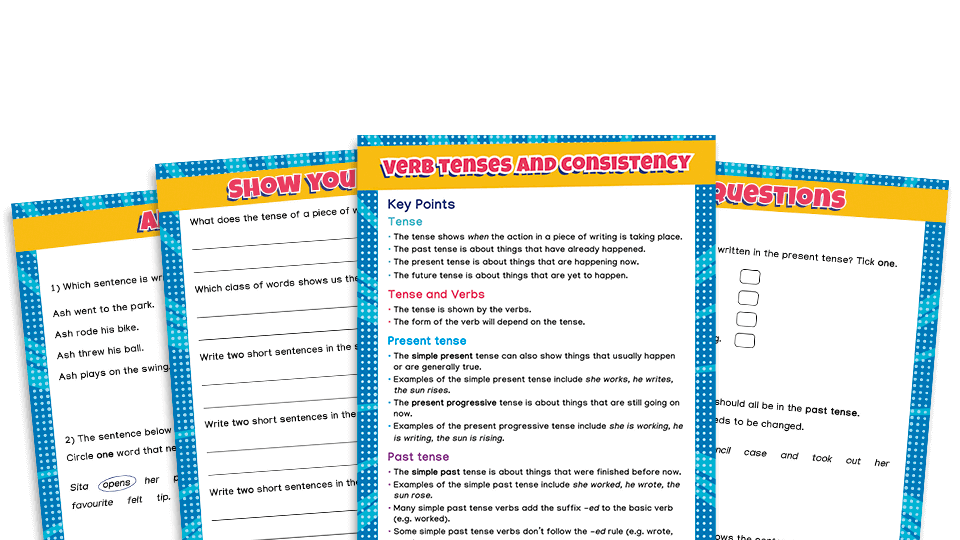
Also for Key Stage 1, this SATs grammar recap pack is the perfect way to check children’s knowledge and understanding of the programme of study for English.
It focuses on key topics, and includes a concise recap of teaching points, followed by a chance for children to show their understanding, and finally, a selection of questions in the range of formats pupils might expect to see in their SATs assessment.
Plus, a PowerPoint version of the pack is included, so it can be worked through in groups, or as a whole class.
Past tense Year 2 SPaG challenge

These bright and appealing grammar worksheets are an excellent way to practise and revise using the past tense in Year 2.
It is divided into five sections, with activities that include SATs-style questions and opportunities for creative writing responses, with eye-catching images as prompts.
Children will rewrite sentences in the past tense, complete past tense sentences by filling in the missing words, circle the words in sentences that show they are in the past tense, write a recount of what they did before they came to school today, and more.
Past tense word search and crossword
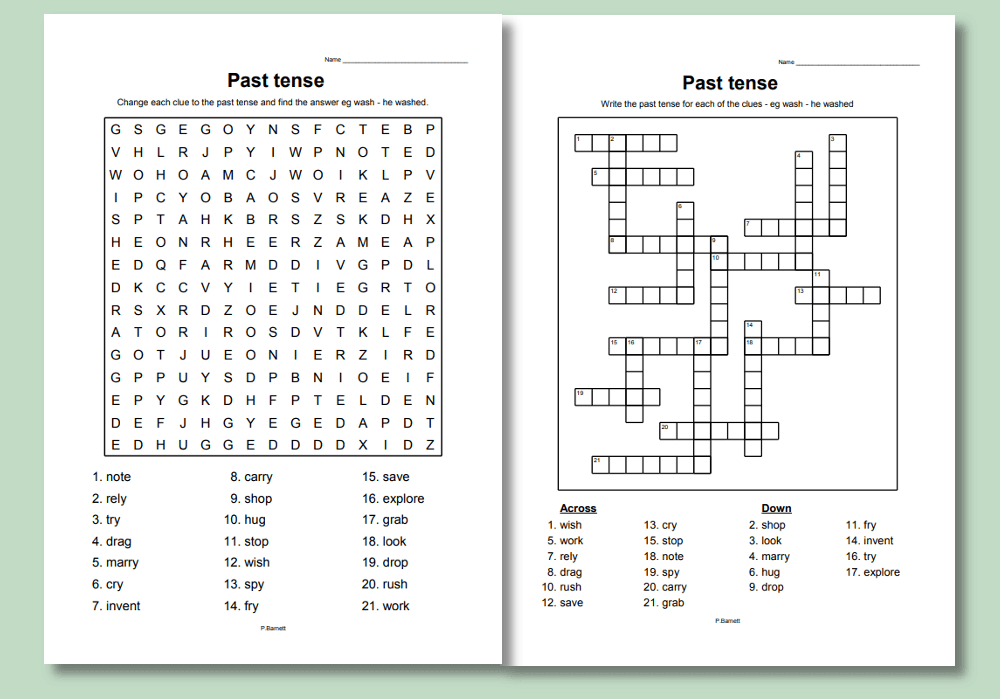
These word puzzles from Peter Barnett aren’t just your standard word search and crosswords. Children are given a list of present tense verbs, then need to know the past tense version to be able to find it in the wordsearch or enter it into the crossword.
There’s also a version with irregular verbs, which you can find here.
Or, download and print the regular verb puzzles, with answers, here.
Irregular verbs past tenses worksheets
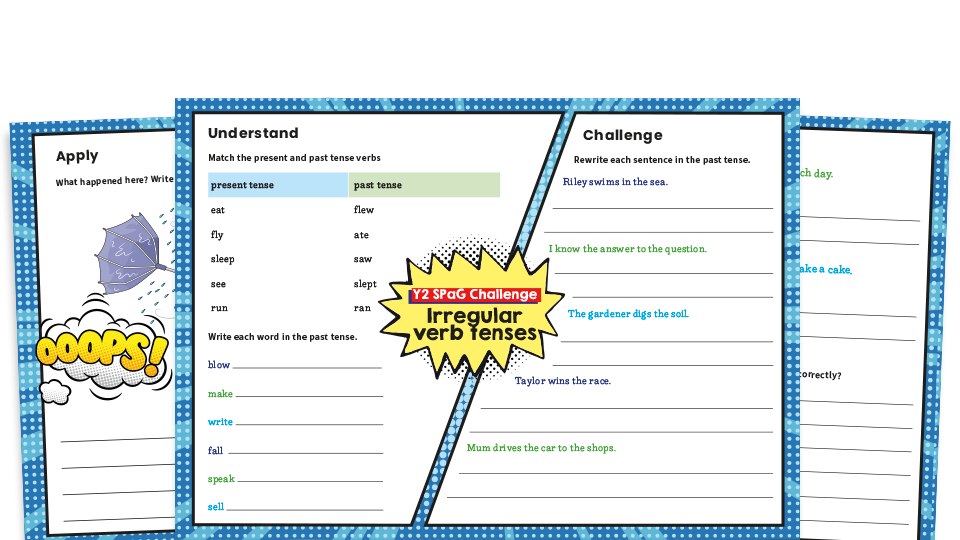
Like with almost any grammar rule in the English language, past tense is no exception to having exceptions.
So when you’re teaching children irregular verbs, those which don’t follow the rule of adding -ed to show the past tense, then these worksheets will help them embed that learning with SATs-style questions and writing opportunities.
You can find these worksheets here.
Past tense literacy tasksheets
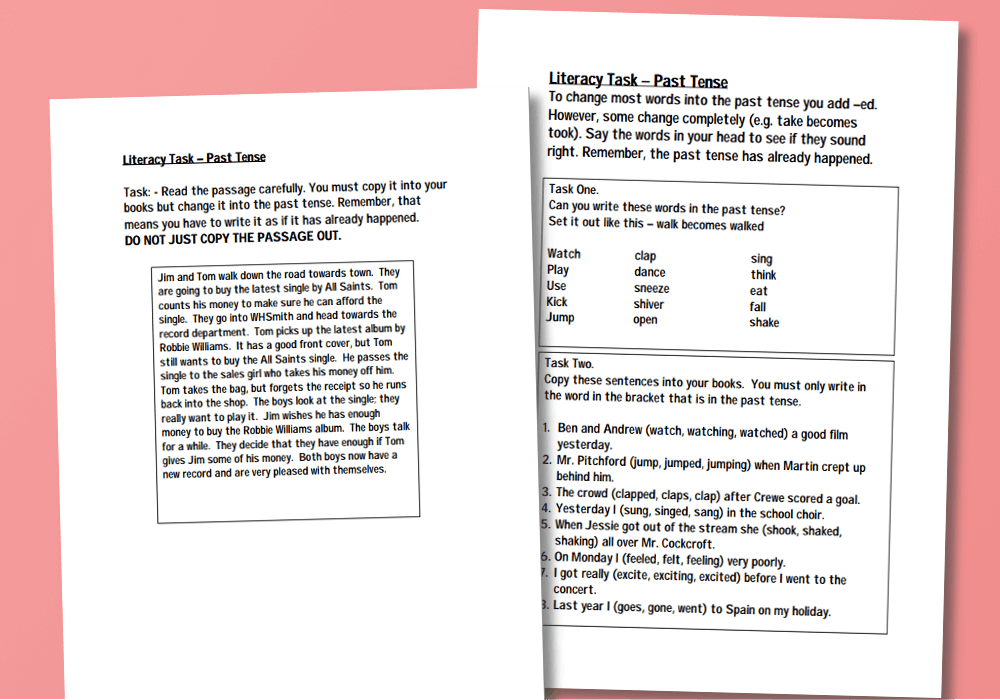
These two activity sheets from Paul Cockcroft involve rewriting passages into the past tense.
There is a section on rewriting single words, one on rewriting sentences, and finally there’s a short passage to rewrite.
Click here to download worksheet 1 and worksheet 2
Mastering the past progressive
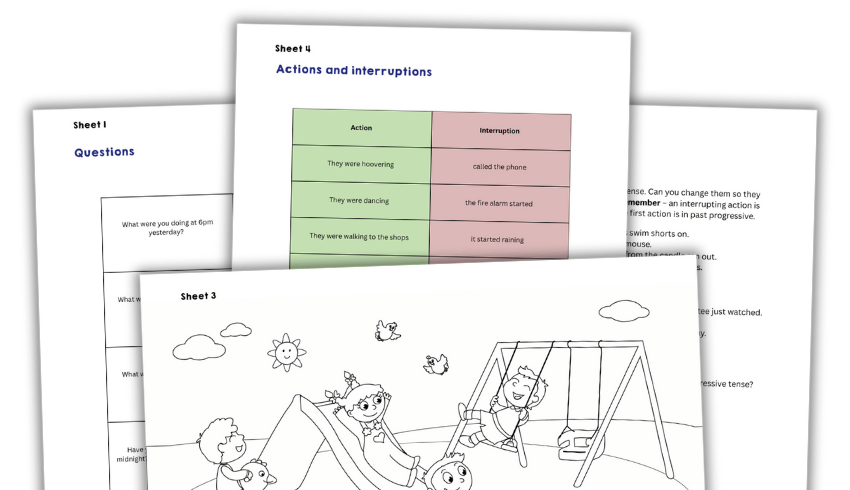
This free resource features a variety of fun, hands-on activities to help children grasp and use the past progressive tense. From games like Who Stole the Cookie? to imaginative writing prompts and observation tasks, each activity supports pupils in practising the tense in engaging, purposeful ways.
Past progressive tense worksheet
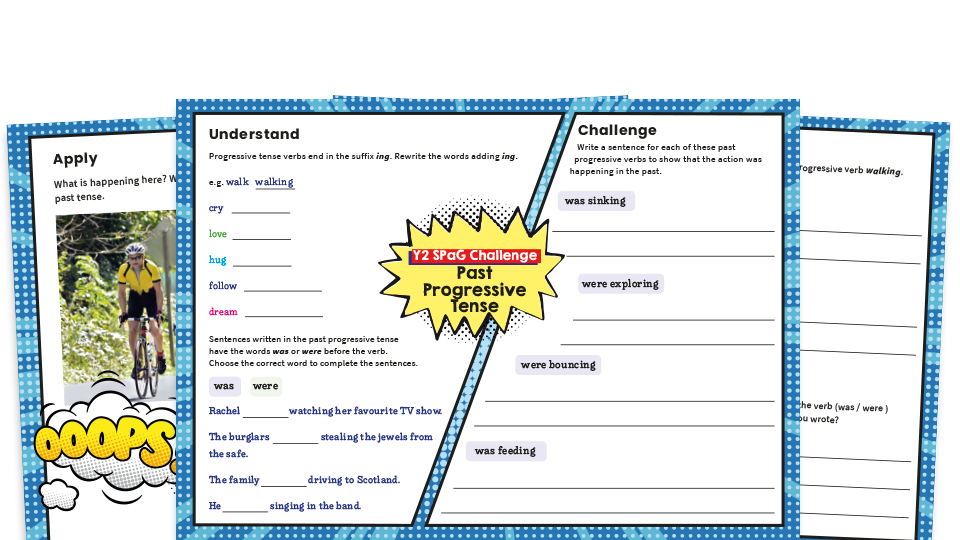
This resource focuses on the past progressive tense in Year 2, with five sections covering: understand, challenge, test, explain and apply.
Children will undertake activities where they must rewrite words by adding ‘ing’, write a sentence for past progressive verbs to show that the action was happening in the past, write a sentence for each version of the past progressive verb walking and explain how the word before the verb (was/were) changes the sentence you wrote, and more.
Past progressive practise paper
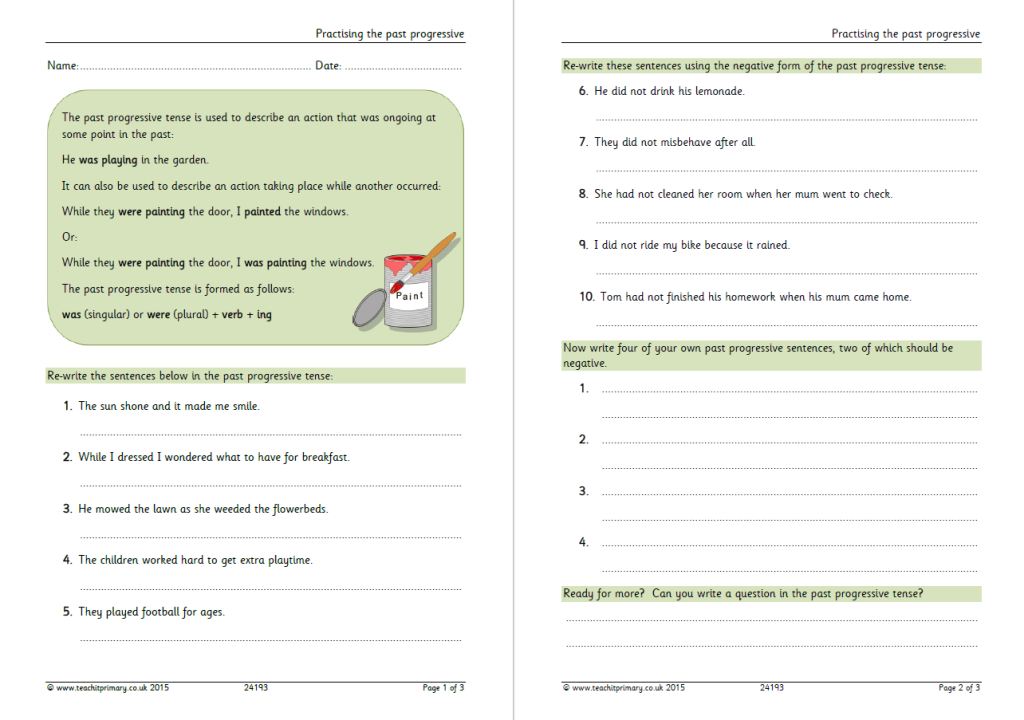
This three-page worksheet introduces children to the past progressive tense, with a brief introduction, questions, an extension task and an answer sheet.










